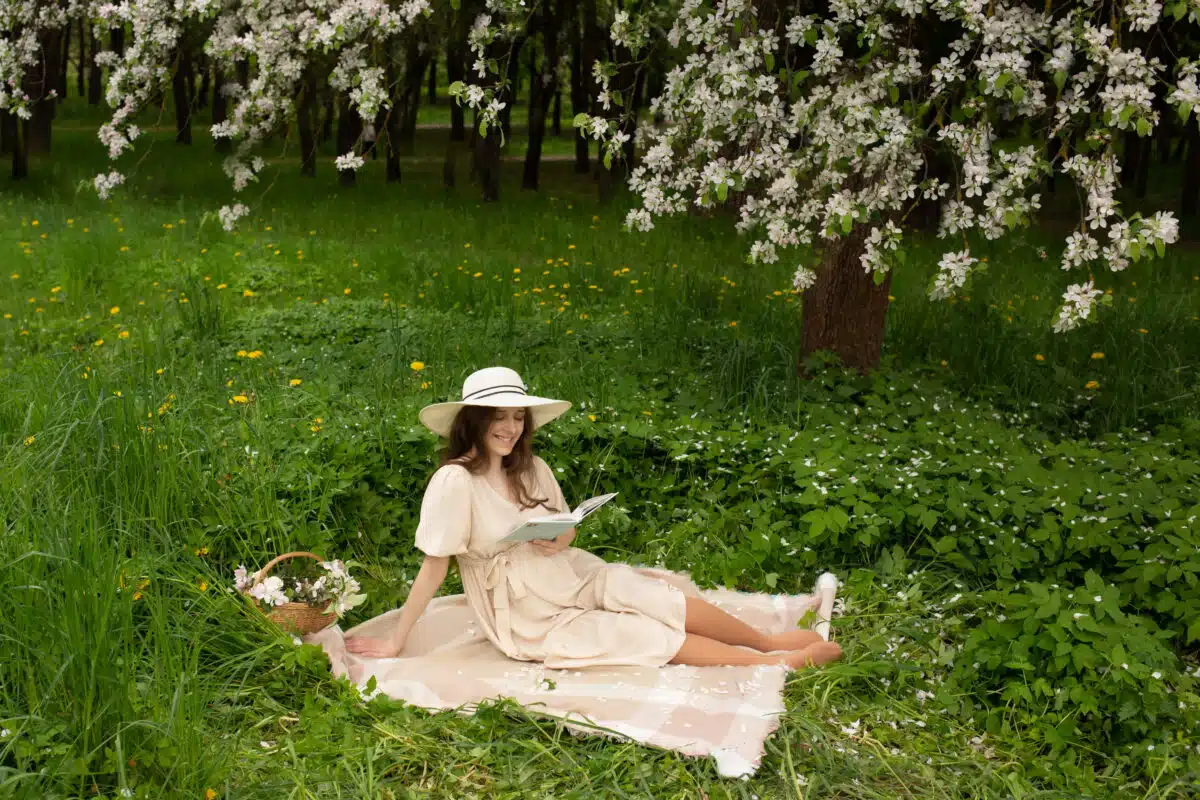Here’s what the Clerihew poetry form is:
Clerihews are a quatrain poem form invented by English poet Edmund Clerihew Bentley in 1905 in the collection Biography for Beginners.
They utilize a simple AABB rhyme scheme to present famous or historical figures in mundane, anachronistic, or absurd situations.
So if you want to learn all about the clerihews poem type, then you’ve come to the right place.
Let’s jump into it!

Forms of Poetry: Clerihew

The clerihew is a four-line autobiographical poem invented by English poet Edmund Clerihew Bentley right at the beginning of the 20th century.
The form is typically intended to be an unusual or even humorous way of thinking about the subject.
While clerihews aren’t among the most popular forms, they are a form that tends to pop up now and again.
Many serious professionals have dabbled in the form and they experienced a bit of a resurgence on Twitter, where short forms like clerihews, haikus, and limericks just happen to be perfect for the platform.
Basic Properties of a Clerihew

| Rhyme Structure | AABB |
| Meter | None |
| Origin | Edmund Clerihew Bentley, England, 1905 |
| Popularity | Mixed; poets tend to either love them or hate them |
| Theme | Concise absurdist autobiographies |
How Are Clerihews Structured?

Clerihews follow an AABB rhyme scheme with only a single quatrain.
The first line is the name of the subject, which may or may not include titles, and the rest of the poem usually consists of an oddly specific statement or views the subject from an absurd angle.
In terms of scope and tone, they’re somewhat similar to limericks.
There is no predefined length or meter.
It’s not unusual for the lines of a clerihew to vary widely in length either.
While most poem forms try to make the rhymes of the poem sound as natural as possible, it’s not unusual for the rhymes of a clerihew to be comically forced.
Bentley claimed that a true clerihew should have the name “at the end of the first line” in The Spectator but did not specifically say that the line should solely consist of the name.
You can choose to add a few extra words, or you can simply choose a funny-sounding name.

While poems are no stranger to obscenity, personal attacks, or satire, this is not the usual methodology of a clerihew.
Clerihews are not intended to be rude and are instead just supposed to be amusing and ridiculous in their execution.
The idea is often to take a famous person and come up with a situation that has some sort of delightful mismatch with their public character.
The most common way to achieve this is by simply making the situation they’re placed in absurdly trivial and needlessly specific, but as long as the poem is innocent and amusing, it has more or less achieved the spirit of the form.
Example of a Clerihew

Sir Humphry Davy
Abominated gravy.
He lived in the odium
Of having discovered sodium.
The above poem is considered the first published clerihew in history.
It comes from Bentley’s own debut of the form in 1905, though there were actually various other examples of the form in that same collection (Biography for Beginners).
Sir Humphry Davy was a renowned chemist and inventor who isolated a variety of elements for the first time in recorded history in his experiments.
One of these, as the poem suggests, was sodium.
As to whether he actually hated gravy or not, the results of my research were inconclusive.
But I’m guessing it was just a humorous line to toss into the poem.
Tips for Writing a Clerihew

The only way in which a clerihew presents a technical challenge for a poet is in choosing a famous or historical figure you know a little about and finding a rhyme for their name.
It’s otherwise a pretty simple form, so the difficulty comes less in the poetic restrictions and more from your own ability to generate humor.
First off, remember that the poem doesn’t necessarily need to be accurate or particularly informative.
It can be, but that isn’t the point.
This is especially helpful to remember if your subject has a name that’s difficult to rhyme with since you can just ‘sacrifice’ any narrative purpose of the second line and use it for an absurd statement of some kind.
As for how to make the poem humorous, it’s largely subjective but unexpected surprises are a good place to start.

Making the assertions of the poem ridiculous or impossible is one option, but you could also just present an unusually mundane perspective on a figure that’s often treated as larger than life.
We’ll go over a few options below.
Alexander the great
was chronically late.
But that’s the kind of leader you get
when watches aren’t invented yet.
The closing lines of the above clerihew happily embrace their own pointlessness.
One relatively simple way to insert comedy into the form is to split the poem with a caesura of some kind, then take it in an unexpected direction in the second couplet.

Edgar Allan Poe
could never make a flower grow.
He’d spend too much time pushing his pen
and they’d all just wilt again.
This one takes a different approach.
Since Poe is a figure who immediately calls to mind images of darkness, depression, and horror, reframing him as a frustrated flower lover is fun.
It also benefits from being somewhat believable, since the image of Poe forgetting to care for his flowers in the midst of a writing fervor is still consistent with the obsessiveness that he’s often characterized within popular culture.
Poet’s Note

While many famous poets seem to start every line of a clerihew capitalized, even if they’re in the middle of a sentence, there’s no hard rule to do so.
This is splendid news because I feel personally attacked when a poem completely ignores the basics of grammar for no apparent reason.
Professionals should have standards.
Comprehensive Collection of Poetry Forms: Craft Words Into Art

Dare to traverse the entire spectrum of poetic forms, from the commonplace to the extraordinary?
Venture from the quintessential Sonnet to the elusive Mistress Bradstreet stanza, right through to the daunting complexity of Cro Cumaisc Etir Casbairdni Ocus Lethrannaigecht.
For those with a zeal to encounter the full breadth of poetry’s forms, this invitation is yours.
Start exploring the vast universe of poetic ingenuity with our comprehensive array of poetry forms right now!
